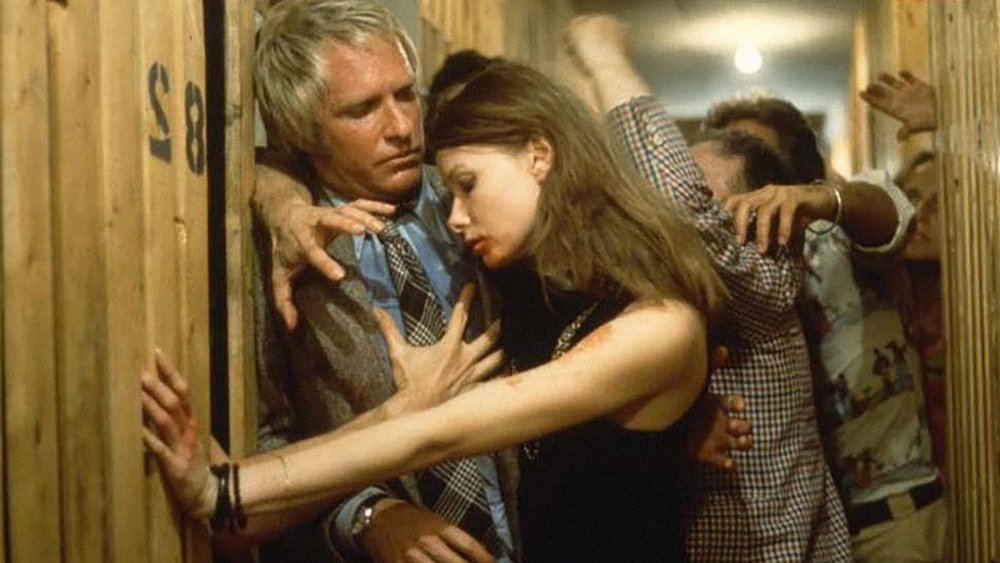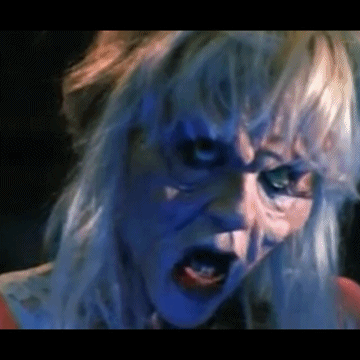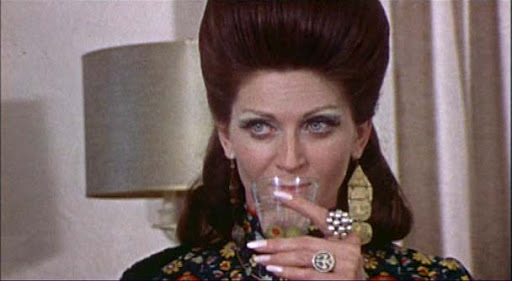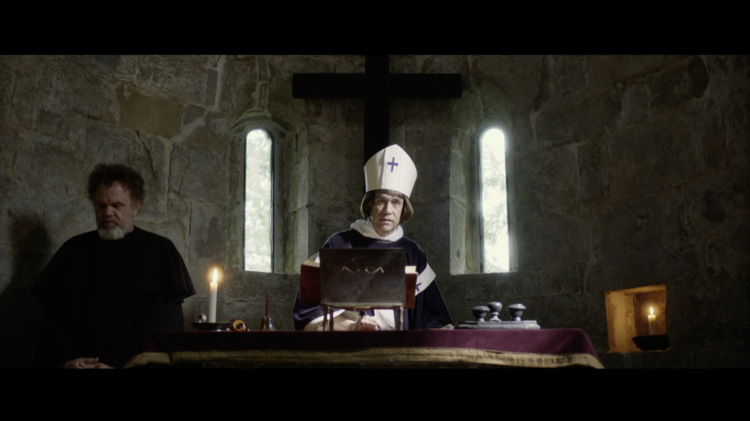
Directed by Michelangelo Antonioni
Zabriskie Point tells the story of an accidental meeting in the desert between a disgruntled, politically-minded college student named Mark (Mark Frechette), and a hip young woman named Daria (Daria Halprin).
After attending a Black Panther meeting at school, and being temporarily imprisoned by some grouchy Los Angeles cops, Mark purchases a gun and shows up at a political protest. He draws his gun and aims at a police officer, who falls dead. Whether Mark killed him is not apparent, but he takes off running as if he is guilty. He goes to the airport and steals a small, privately-owned airplane.
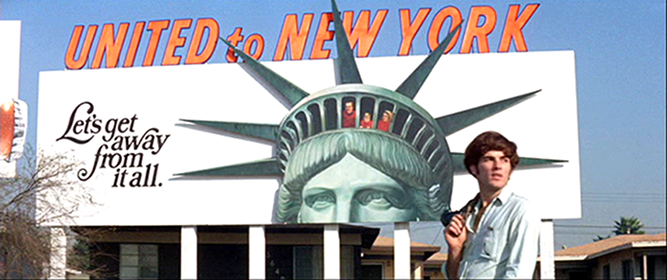
In between shots of Mark’s antics, we are introduced to hippie-ish Daria, who works for a real estate developer who plans to build a gaudy, artificial modern neighborhood in the desert. Daria borrows a car and sets off on a road trip from L.A. to Phoenix to visit her boss. While driving through the desert, she stops at a roadside restaurant, asking where she can find a local man who takes in troubled kids from L.A. She spots the roving band of children playing around some abandoned junk, and tries to talk to them. They start tearing at her clothes, but she manages to escape and drive away.
At some point her car overheats, and while she is pouring water on her radiator, Mark flies low and buzzes her with his stolen plane. After forcing her to dive face-first onto the desert sand to avoid being decapitated by the propeller, he drops a red shirt out of the plane, which I guess for the purposes of this movie, means they are now friends.

In the next scenes they visit Zabriskie Point, a tourist stop in Death Valley. They talk a little about themselves and walk around in the desert. We are treated to beautiful wide-angle landscapes of desert and sky. Then they take their clothes off and have sex in the dust. Suddenly, several other flower-child couples who have appeared, seemingly out of the ether, also roll around in the dust. A caricature of a suburban family of tourists shows up, takes a look out at the dunes, and then drives away in their massive RV rig, apparently ignorant of the orgy going on around them.

After they are finished, Mark attempts to shoot another cop, but Daria stops him. Then they paint obscene things on the airplane, and Mark flies back to L.A. to face the music. On her way to Phoenix, Daria hears on the radio that Mark has been killed by the police. When she arrives at her boss’s house, she is visibly upset. Instead of staying in the guest room that has been prepared for her, she flees back to her car. She turns around and stares at the house and imagines it exploding into flames while music by Pink Floyd plays. It is apparent that a lot of money was spent on these pyrotechnic effects because the scene is repeated 15 times in a row, followed by slow-motion shots of the furniture and other contents of the house exploding.
The movie is an attractive mess, much like its own protagonists. The desert landscapes are beautifully shot, and the soundtrack is a Who’s Who of the 1960s rock scene with contributions from Pink Floyd, Jerry Garcia, The Youngbloods, The Rolling Stones, and (almost) The Doors. Antonioni was acutely aware of what was hip.

He started filming in 1968, attempting to capture the zeitgeist of late ’60s American counterculture which had much in common with his own anti-consumerist ideals. His critique of America and its corruption would make him a target of the FBI, who tried and failed to charge him with several crimes following the making of this movie. Though sincere, and accurate, in his attempt to capture the impotent rage of an agitated hippie, the resulting film is disjointed and boring. I fell asleep the first time I tried to watch it. The scenes do not movie fluidly, or very logically, but I understand his stylistic choice. It makes sense in the context of the ’60s when mind-altering drugs were popular, and social upheaval the norm. Life must have seemed like a series of jump cuts. Unfortunately, Easy Rider presents a more cohesive and engaging story of the peace-and-love generation’s souring, and it beat the release of Zabriskie Point by a year. (Fun fact: Daria Halprin would later marry Easy Rider‘s star, Dennis Hopper.) MGM failed to promote it properly, and following an abnormally short box office run, it proved to be a financial failure.
Speaking of agitated hippies, the lead actor, Mark Frechette, was involved in a cult called the Fort Hill Community, which revolved around a charismatic leader to whom Frechette gave his entire earnings from this movie. He and other members of the cult attempted to rob a bank a few years after its release. He was incarcerated, and died in jail when a barbell fell on him, crushing his windpipe. Coincidentally, another cult of agitated hippies–the as-yet-unkown Manson Family–was crawling around the dunes of Death Valley the year this was filmed, not far from the area where the mass make-out session took place. When you think about the scene with the troubled kids attacking Daria, it seems eerily metaphorical.
P.S.
Everyone who watched MTV in the ’90s will immediately recognize that the video for The Smashing Pumpkins’ Today must have been heavily inspired by this movie.

(This has been part one of four in a series of Independence Day-themed posts. Happy Birthday, America.)



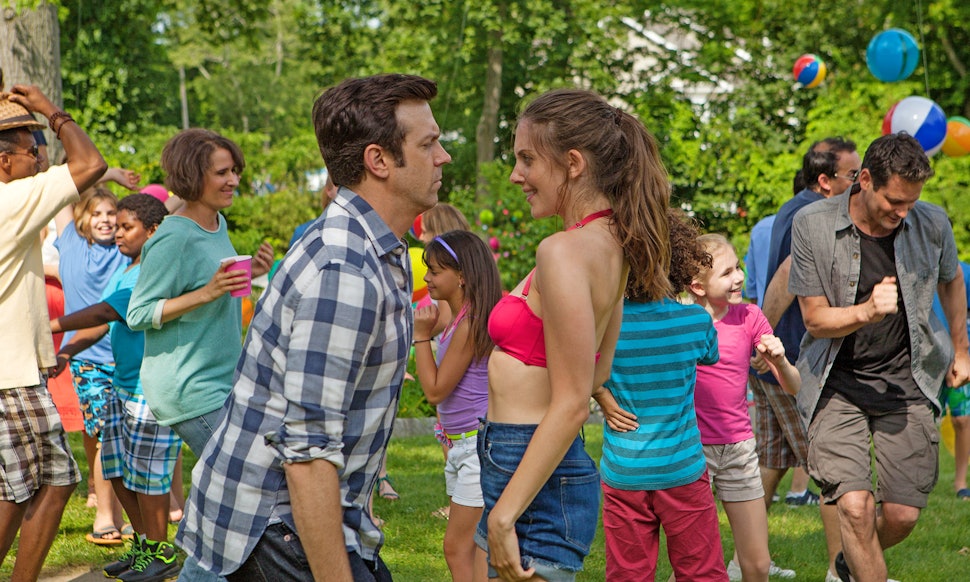
 Let’s not mention the whole bottle-fingering scene.
Let’s not mention the whole bottle-fingering scene.









